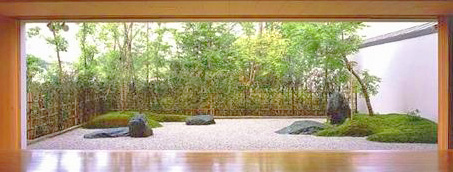 The appearance of a typical Zen garden defies the classic definition of “garden” in almost every aspect. It is not a place with lanes of lush trees, where a bright flood of flowers of all possible colours shines next to a green lawn. It’s not a place you would have a garden picnic or party at with your family or friends.
The appearance of a typical Zen garden defies the classic definition of “garden” in almost every aspect. It is not a place with lanes of lush trees, where a bright flood of flowers of all possible colours shines next to a green lawn. It’s not a place you would have a garden picnic or party at with your family or friends.
Yet, Zen gardens are becoming increasingly popular in our world. They offer something else. Something we’re looking for in today’s rush. With their stone strenuousness, we are sure to forget about everyday stress and strengthen the ability to concentrate there. With their purity and minimalism, they do offer peace and comfort to ourselves.
Is Zen garden really Zen?
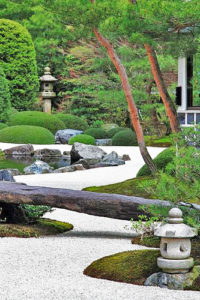 Right from the beginning, it should be stressed that the term “Zen Garden” is somewhat incorrect. It is only the “western” naming of this kind of gardens. Japanese for this type of gardens use the term “kare sansui”, which in literal translation means “dry mountains and waters” or “dry landscapes”.
Right from the beginning, it should be stressed that the term “Zen Garden” is somewhat incorrect. It is only the “western” naming of this kind of gardens. Japanese for this type of gardens use the term “kare sansui”, which in literal translation means “dry mountains and waters” or “dry landscapes”.
The term “Zen Garden” first appeared in English in the book of the American writer Loraine E. Kuck “100 Kyoto Gardens” in 1935. The Japanese term for “Zen Garden”- zen-teki teien, was first published in Japanese literature in the year 1958.
Yet, eighty years of use, right or wrong, gave to the term “Zen garden” a patina of authenticity. And we will stay at the concept of the “Zen garden” here as well.
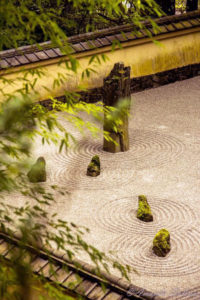 What is a Zen garden?
What is a Zen garden?
This type of garden is the classic type of a meditation garden. In Japan, they have been popular since the 14th century, mainly thanks to the Zen Buddhist monk, teacher and builder of gardens – Soseki Musó. Dry stone gardens were then used by Buddhists only as a tool for meditation. For this reason, most authentic Japanese rock gardens – kare sansui – for us Zen gardens – are located in the area of Buddhist monasteries. Their beauty in a simplicity has survived and it is coming back to life again and again after more than seven centuries.
Plant life is minimal in a typical dry/zen garden, often to zero. Sand, gravel, and stone can even be the only elements to represent the whole landscape, ocean (sand or gravel), islands, rocks and mountains (stones of different sizes).
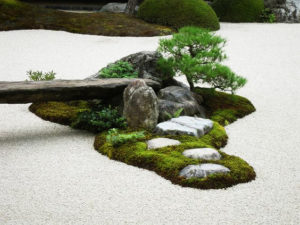 In Zen gardens, the typical purity and balance of space are most obvious aspects (see the aspects of Japanese gardens). You can find really large Zen gardens, but also ones built on a very small land. Many people around the world have been inspired by Kare Sansui/Zen gardens to create a small meditation piece of the world in their garden.
In Zen gardens, the typical purity and balance of space are most obvious aspects (see the aspects of Japanese gardens). You can find really large Zen gardens, but also ones built on a very small land. Many people around the world have been inspired by Kare Sansui/Zen gardens to create a small meditation piece of the world in their garden.
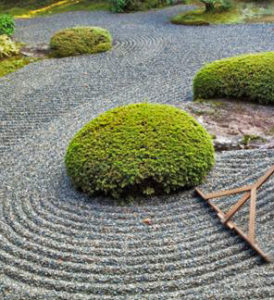 Zen gardens are intended as a personal project that reflects the own inner self. White sand or gravel is raked in an original pattern by the owner of the garden. Copying the pattern of another Zen Garden is against the spirit of such a garden; although this does not mean that you cannot inspire yourself.
Zen gardens are intended as a personal project that reflects the own inner self. White sand or gravel is raked in an original pattern by the owner of the garden. Copying the pattern of another Zen Garden is against the spirit of such a garden; although this does not mean that you cannot inspire yourself.



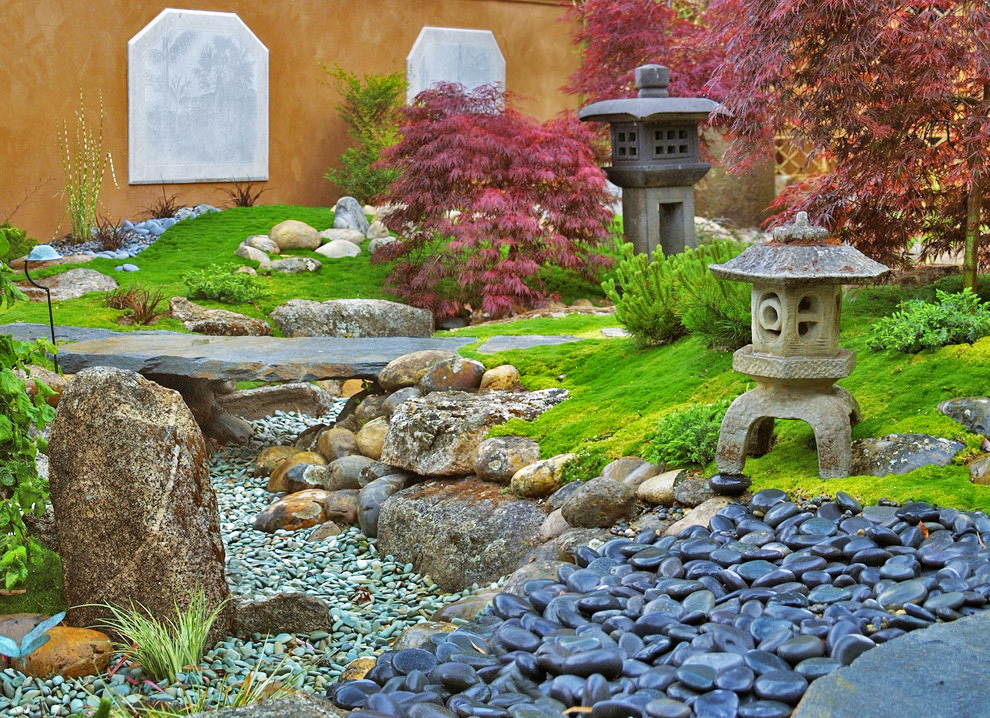 Do you like the idea of a small sanctuary of peace and tranquillity – a small zen space a few steps from your door, right in your garden? Although the art of Japanese gardening is many centuries old, in just one weekend you can create a reasonable replica of the classic temple garden in a corner of your garden. It requires a minimal amount of materials and money, and especially very little maintenance.
Do you like the idea of a small sanctuary of peace and tranquillity – a small zen space a few steps from your door, right in your garden? Although the art of Japanese gardening is many centuries old, in just one weekend you can create a reasonable replica of the classic temple garden in a corner of your garden. It requires a minimal amount of materials and money, and especially very little maintenance.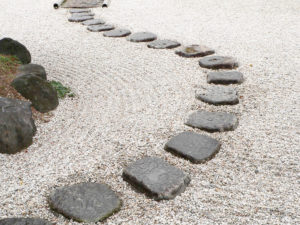 The basic ingredients you will need are a small, even a miniature land, some amount of sand (the whiter it is, the better) or tiny gravel to cover the ground (we recommend to lay a garden textile foil under it), some stones of different shapes and sizes. Do not worry too much about the right choice of stones at the beginning. Since they are not fixed, you can later simply replace, move and add some, and gradually tune them to your imagination.
The basic ingredients you will need are a small, even a miniature land, some amount of sand (the whiter it is, the better) or tiny gravel to cover the ground (we recommend to lay a garden textile foil under it), some stones of different shapes and sizes. Do not worry too much about the right choice of stones at the beginning. Since they are not fixed, you can later simply replace, move and add some, and gradually tune them to your imagination.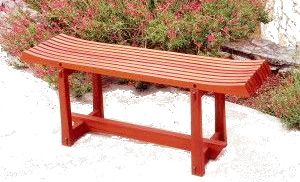
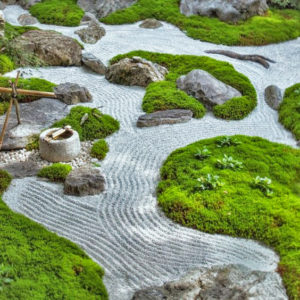 An ideal
An ideal 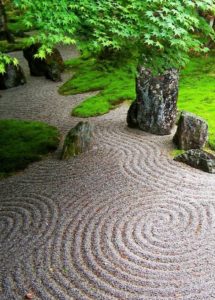
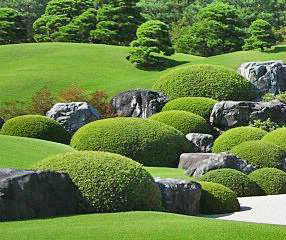 The idea of a
The idea of a 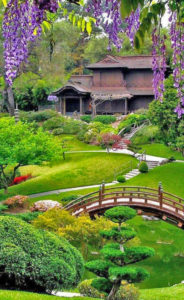 Nevertheless, we can say that they are all formed into a certain concept of an ideal landscape. And that is through a certain symbolism and poetics. Even a way of looking at the expression of this ideal landscape, it divides traditional Japanese gardens into different styles. These styles blend and mix in various gardens.
Nevertheless, we can say that they are all formed into a certain concept of an ideal landscape. And that is through a certain symbolism and poetics. Even a way of looking at the expression of this ideal landscape, it divides traditional Japanese gardens into different styles. These styles blend and mix in various gardens.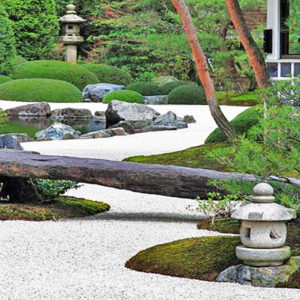
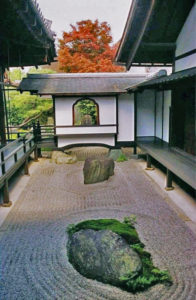
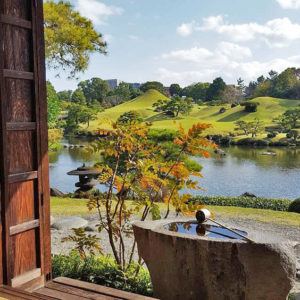 Tsukiyama
Tsukiyama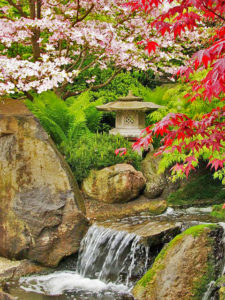 This is the classic style of the Japanese garden, which you can enjoy while strolling along garden paths and temple verandas. Usually, this garden is larger than the Zen Garden. This kind of garden is mainly sought after by visitors during the spring for the beauty of blooming sakura. In autumn, it is just the Tsukiyama gardens that make up those wonderful colour combinations of red maples and yellowish ginkgo trees.
This is the classic style of the Japanese garden, which you can enjoy while strolling along garden paths and temple verandas. Usually, this garden is larger than the Zen Garden. This kind of garden is mainly sought after by visitors during the spring for the beauty of blooming sakura. In autumn, it is just the Tsukiyama gardens that make up those wonderful colour combinations of red maples and yellowish ginkgo trees.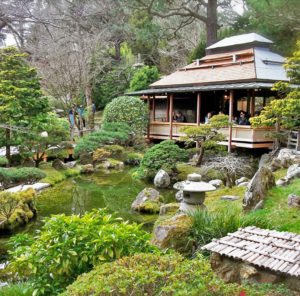 Roji, Chaniwa (Tea Garden)
Roji, Chaniwa (Tea Garden)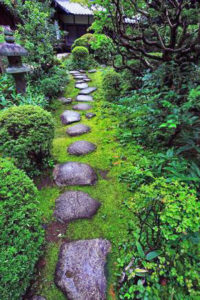
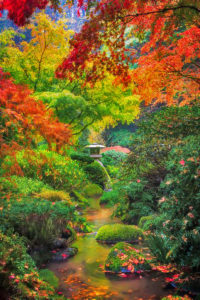 Paradise Garden
Paradise Garden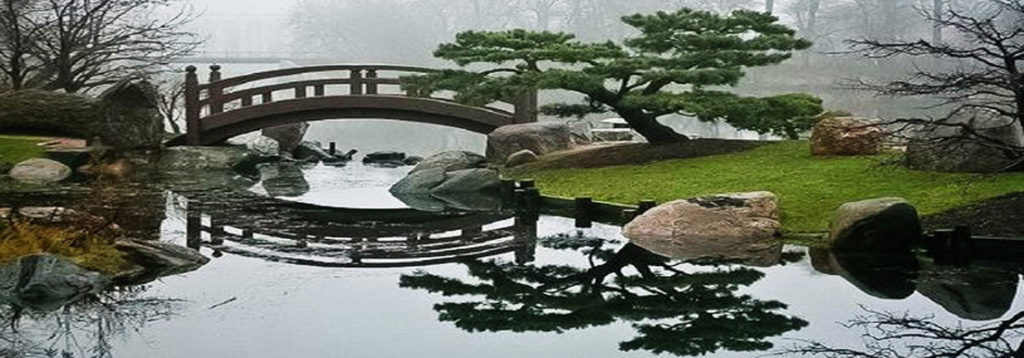 Water is one of the fundamental elements of
Water is one of the fundamental elements of 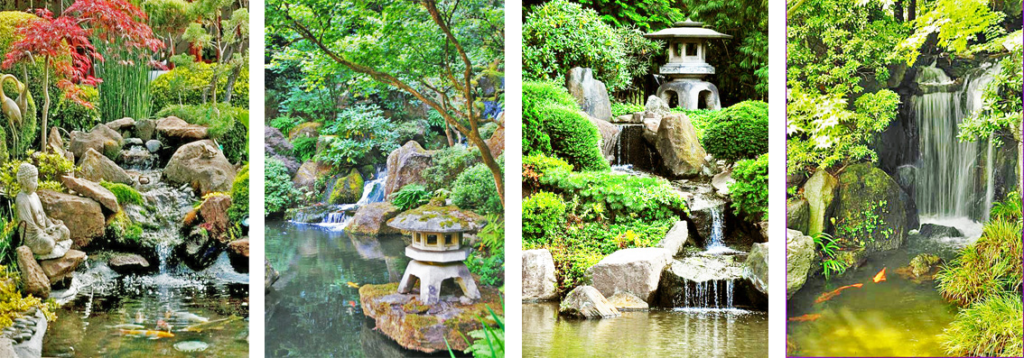
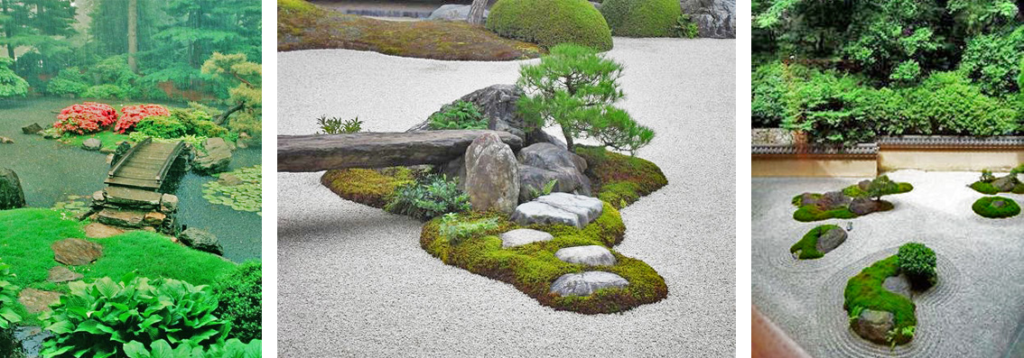
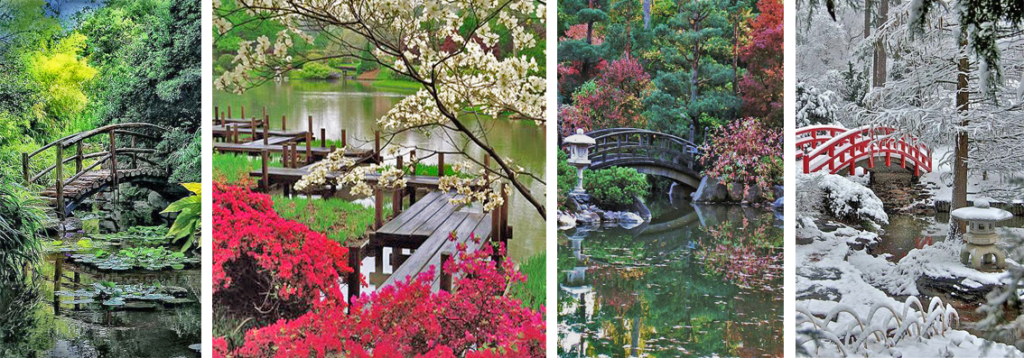
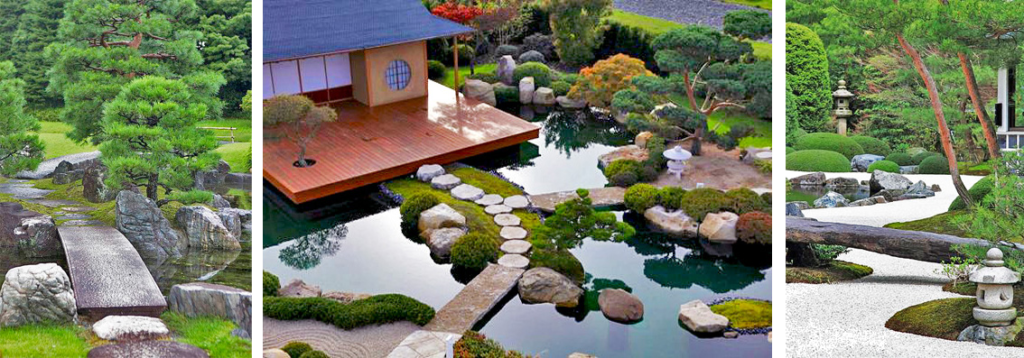
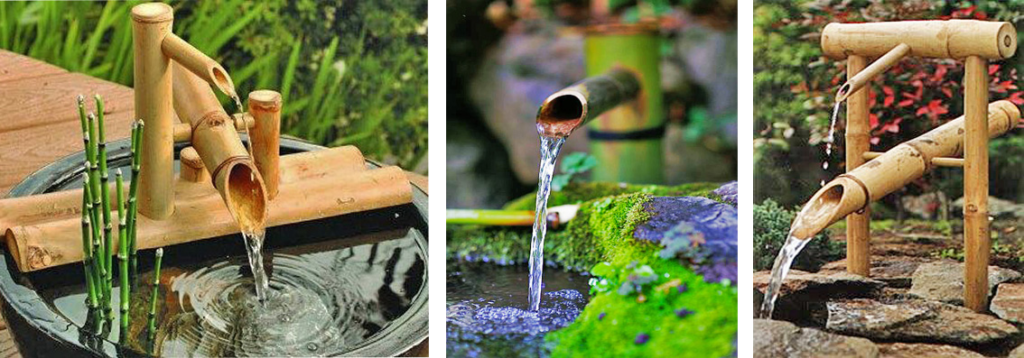
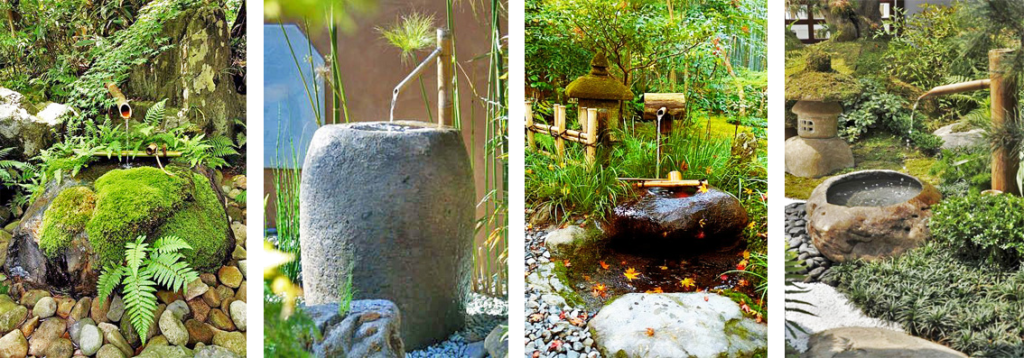
 Japanese koi carp and other fish bring into the water space wonderful colours and life.
Japanese koi carp and other fish bring into the water space wonderful colours and life.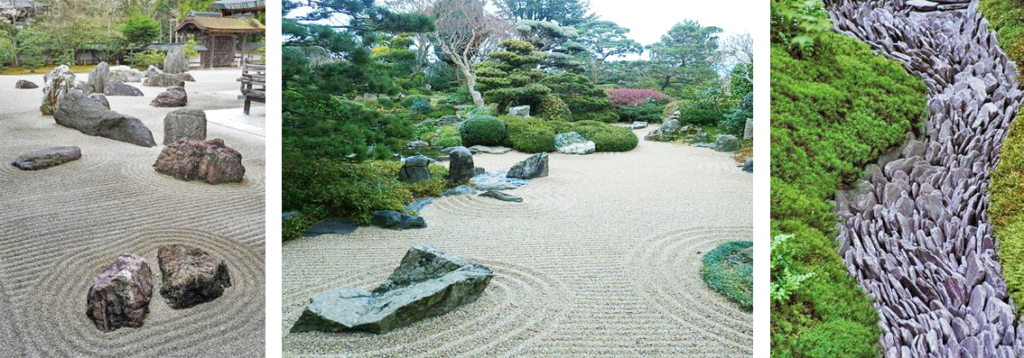
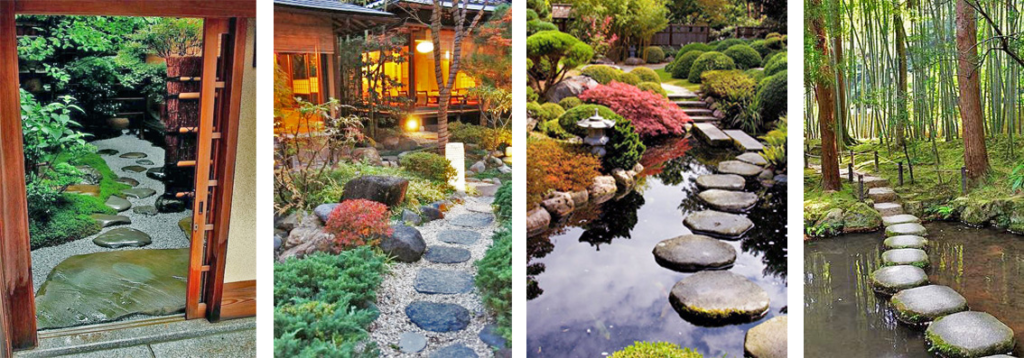
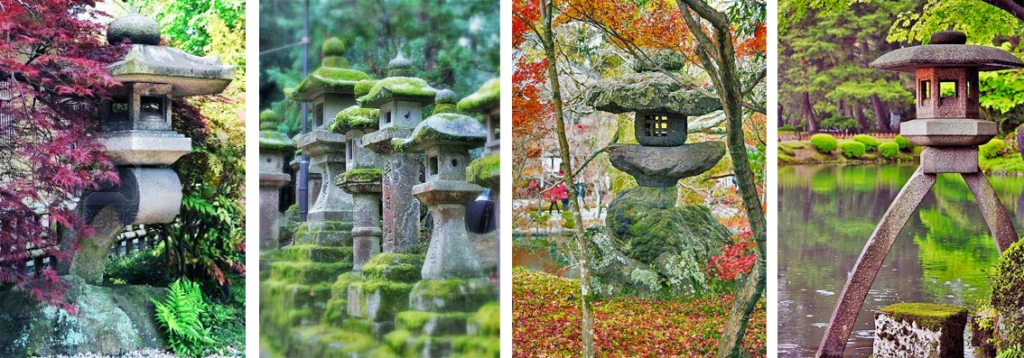
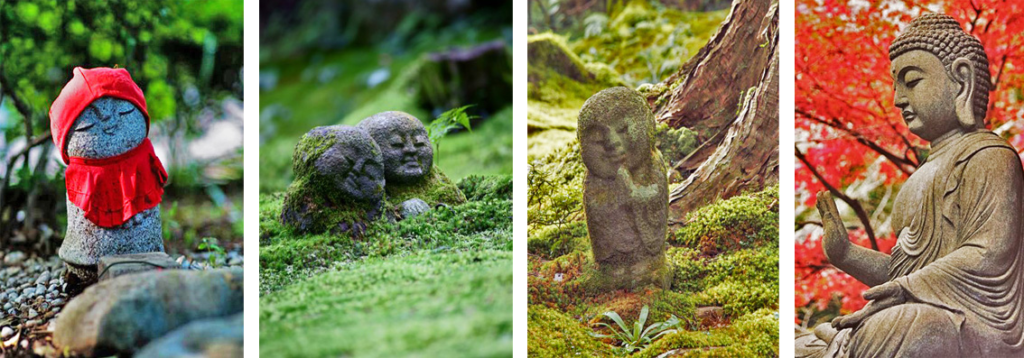
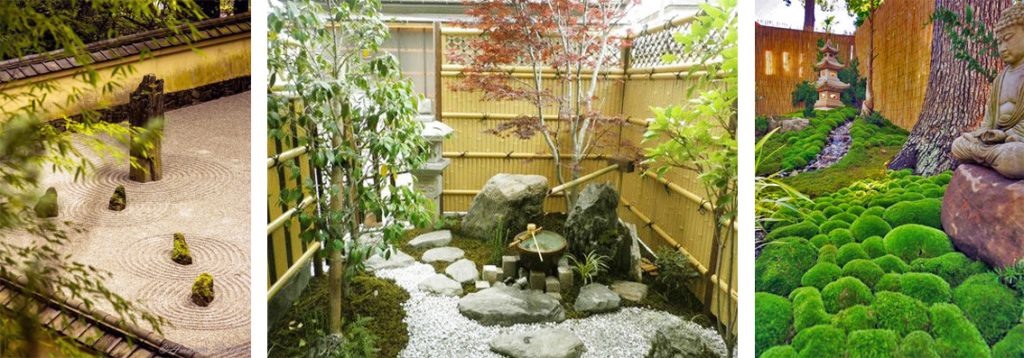
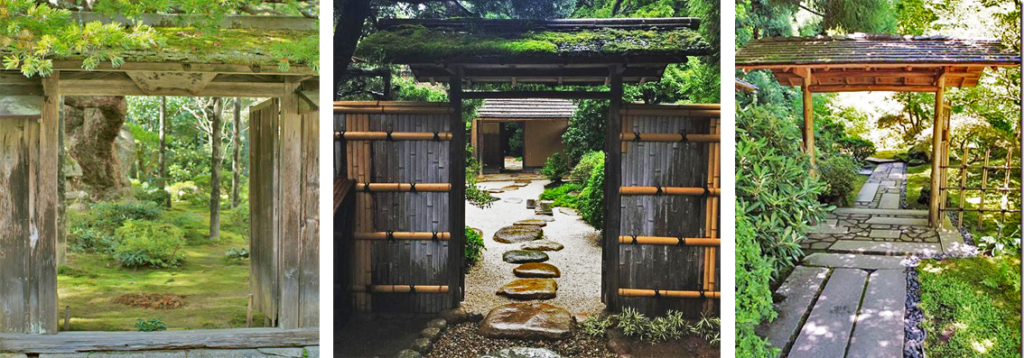
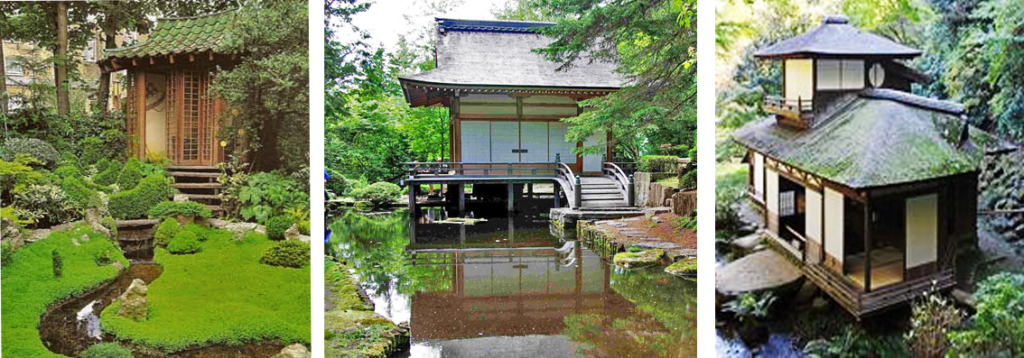
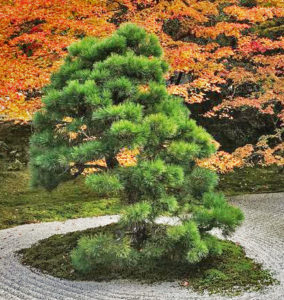 Trees and plants are not the most important element in Japanese gardens. Still, with most styles, the selection and composition of individual trees, shrubs, plants and mosses are very important. But that’s already a topic for another separate article.
Trees and plants are not the most important element in Japanese gardens. Still, with most styles, the selection and composition of individual trees, shrubs, plants and mosses are very important. But that’s already a topic for another separate article.